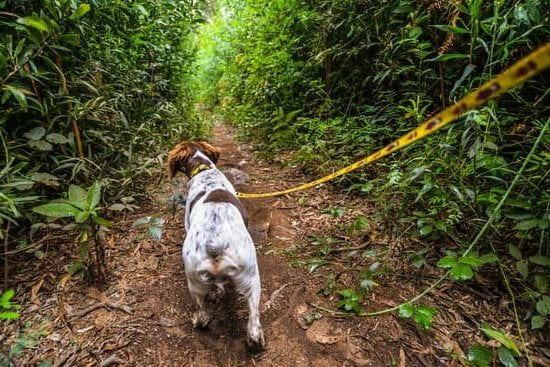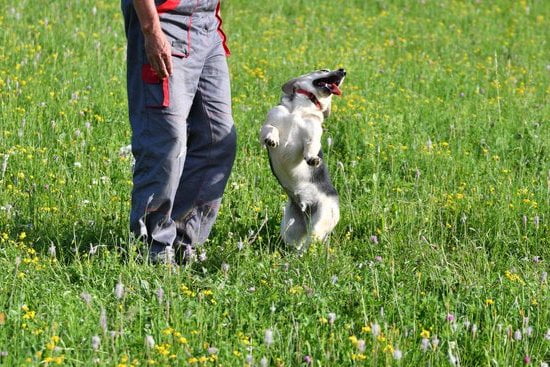Are you wondering how to train your dog to catch a treat? Teaching your furry friend this skill goes beyond just a fun party trick – it can also have great benefits for their overall obedience and impulse control. In this article, we will explore the importance of training your dog to catch a treat and provide you with all the tips and techniques you need to successfully teach them this impressive skill.
Understanding your dog’s behavior is key when it comes to training them to catch treats. By recognizing their natural instincts and behaviors, you can effectively use these to your advantage in the training process. Additionally, choosing the right treats is essential for successful training sessions. From size and texture to flavor, we will guide you on selecting the best treats for teaching your dog to catch.
In the following sections, we will provide step-by-step guides on basic and advanced training techniques, as well as troubleshoot common problems that may arise during the training process. We will also emphasize the importance of practice, patience, and positive reinforcement in achieving success in training your dog to catch a treat. So let’s get started on enhancing your bond with your pet through this enjoyable and rewarding training experience.
Understanding Your Dog’s Behavior
Natural Instincts and Behaviors
Dogs have natural predatory instincts that can be tapped into when training them to catch treats. In the wild, dogs rely on their quick reflexes and hand-eye coordination to catch prey, and this same instinct can be triggered when catching treats. By understanding your dog’s natural behaviors, you can effectively use these traits to your advantage in training.
When a dog is focused on a desired object, such as a treat, their attention becomes heightened, and their instincts take over. This is why many dogs are able to catch treats with ease, as it triggers their innate hunting behavior. Understanding this aspect of your dog’s behavior allows you to tailor your training techniques to align with their natural tendencies, making the learning process more intuitive for them.
Building Trust and Confidence
Training your dog to catch treats also helps build trust and confidence between you and your furry companion. When a dog successfully catches a treat that has been tossed to them, it reinforces their belief that they are capable of achieving the task at hand. This sense of accomplishment boosts their confidence and strengthens the bond between the two of you.
Moreover, by engaging in training exercises that involve catching treats, you are promoting positive interaction with your dog. This positive reinforcement not only enhances their obedience but also nurtures a healthy relationship based on trust and mutual understanding. Understanding how catching treats ties into your dog’s instincts and behavior can help you create an enjoyable training experience for both you and your pet.
Choosing the Right Treats
When it comes to training your dog to catch a treat, the type of treat you use can make a big difference in the success of the training. It’s important to choose treats that are not only enticing for your dog, but also safe and easy for them to catch. Here are some tips for selecting the best treats for training your dog to catch:
Size
Choose treats that are small enough for your dog to easily catch in their mouth. Larger treats may be difficult for them to grab quickly, leading to frustration or confusion during the training process.
Texture
Opt for treats with a soft and chewy texture, as these will be easier for your dog to catch and swallow without any risk of choking. Avoid hard or crunchy treats that could splinter and pose a danger to your pet.
Flavor
Find treats with a strong and appealing scent or flavor that will capture your dog’s attention. This will make it more likely that they’ll stay focused on catching the treat during training sessions.
By considering these factors when choosing treats for your dog, you can set them up for success in learning how to catch treats effectively. Remember that positive reinforcement with these tasty rewards will help strengthen the bond between you and your furry friend as well.
Basic Training Techniques
Training your dog to catch a treat can be a fun and rewarding experience for both you and your pet. It not only enhances their obedience skills but also improves their impulse control. Here are some basic training techniques to help you get started:
- Start with the right treat: Begin by selecting small, soft treats that are easy for your dog to catch in their mouth. This will make it easier for them to grasp the concept of catching a treat.
- Positioning: Stand or sit in front of your dog at a close distance. Hold the treat in your hand and grab their attention by letting them see and smell the treat.
- Throwing the treat: Gently toss the treat towards your dog while using a verbal cue such as “catch” or “get it.” Make sure to throw it low enough for them to reach but high enough for them to make an effort to catch it.
Repeat this process several times, gradually increasing the distance of the toss as your dog becomes more proficient at catching treats, always giving praise and rewards for their efforts. Be patient and consistent with your training, and remember that practice makes perfect.
Advanced Training Techniques
Once your dog has mastered the basics of catching treats, you can move on to more advanced training techniques to further improve their skills. One method to enhance your dog’s catching abilities is by working on their hand-eye coordination through the use of higher difficulty levels and distractions. For example, you may want to try tossing the treat from different angles or adding in some background noise to simulate a real-world scenario.
Another advanced technique involves refining your timing when releasing the treat. This can help your dog anticipate when and where the treat will be thrown, improving their reaction time and overall success rate. Additionally, you can experiment with varying the speed and trajectory of the treat throws to keep your pup engaged and challenged during training sessions.
It’s important to remember that each dog is unique, so some may progress faster than others when it comes to learning these advanced techniques. In some cases, certain breeds or individual dogs may have a natural talent for catching treats, while others might require more time and patience. Pay close attention to your pet’s body language and behavior during training, as this can provide valuable insights into their comfort level and readiness for more challenging exercises.
| Method | Description |
|---|---|
| Hand-eye coordination | Work on improving your dog’s ability to catch treats from various angles. |
| Refined timing | Practice releasing treats with precise timing to help your dog anticipate their movements. |
| Varying speed & trajectory | Experiment with different throwing speeds and directions to challenge your dog’s catching skills. |
Troubleshooting Common Problems
Training your dog to catch a treat can be an enjoyable and rewarding experience, but it’s not without its challenges. One common problem that dog owners encounter is their pet’s reluctance to catch the treat.
This can be due to a variety of reasons, including fear, lack of interest, or distraction. To address this issue, it’s important to start with small, soft treats that are easy for your dog to catch, and gradually work your way up to larger treats as their confidence grows.
Another common problem is the tendency for some dogs to snatch or grab at the treat rather than catching it gently. One way to tackle this issue is by practicing a gentle release command such as “easy” or “gentle” as you toss the treat towards them. Additionally, using treats with a softer texture can encourage your dog to be more gentle when catching.
Finally, some dogs may struggle with hand-eye coordination and timing when it comes to catching treats. If your dog consistently misses the mark, consider adjusting your tossing technique and experimenting with different types of treats until you find what works best for them.
It’s important to remain patient and persistent when troubleshooting these common problems during training. Remember that every dog is unique, and it may take time and effort to help them overcome these obstacles. With consistent practice and positive reinforcement, you can help your dog become a pro at catching treats in no time.
| Common Problem | Solution |
|---|---|
| Reluctance to Catch Treat | Start with small, soft treats and gradually increase size as confidence grows |
| Snatching or Grabbing Treats | Practice a gentle release command like “easy” or “gentle”, use softer texture treats |
| Poor Hand-Eye Coordination | Adjust tossing technique, experiment with different types of treats |
Practice and Patience
Training your dog to catch a treat requires both practice and patience. Consistent training sessions are essential for reinforcing the behavior and improving your dog’s skills over time. Here are some tips to help you make the most of your training efforts:
- Set aside dedicated time for training: Find a quiet, distraction-free environment where you can focus on working with your dog.
- Be patient and persistent: Understand that learning a new skill takes time, so don’t get discouraged if progress is slow at first.
- Keep training sessions short and enjoyable: Dogs have short attention spans, so aim for brief, frequent sessions to prevent boredom or frustration.
It’s also important to keep in mind that every dog learns at their own pace. Some may pick up the catching skill quickly, while others may require more time and repetition. Remember to stay positive and encouraging throughout the process, as your attitude can greatly impact your dog’s willingness to learn.
Consistency is key when it comes to practicing with your dog. Use the same verbal cues and hand signals each time you train, and always end each session on a positive note. With dedication and patience, you’ll be amazed at how much progress your dog can make in learning to catch treats.
Lastly, remember that training should be an enjoyable experience for both you and your dog. Incorporate plenty of praise, playtime, and rewards to make the process fun and rewarding for your furry friend. By approaching the training with a positive mindset and plenty of patience, you’ll set yourself up for success in teaching your dog this impressive skill.
Encouraging Positive Reinforcement
Positive reinforcement is a crucial aspect of training your dog to catch a treat. It is essential to motivate and reward your dog for successfully catching treats in order to strengthen the bond between you and your pet. Positive reinforcement can also make the training process more enjoyable and effective for both you and your furry friend.
One way to encourage positive reinforcement when training your dog to catch a treat is by using verbal praise and physical affection. When your dog successfully catches a treat, immediately offer verbal praise such as “good boy/girl” along with gentle petting or scratching behind the ears. This will associate the act of catching treats with positive experiences, making your dog more eager to continue practicing the skill.
In addition to verbal praise and physical affection, using treats as a reward for catching treats can be highly effective. After your dog successfully catches a treat, immediately give them another small, tasty treat as a reward.
This not only reinforces the behavior of catching treats but also serves as an incentive for your dog to continue improving their skills in this area. However, it’s important to use these rewards in moderation to avoid overfeeding or causing weight gain in your pet.
Conclusion
In conclusion, training your dog to catch a treat can be a fun and rewarding experience for both you and your furry friend. Not only does it improve their obedience and impulse control, but it also strengthens the bond between you and your pet. By understanding your dog’s behavior and choosing the right treats, you can effectively train them to master the skill of catching treats in no time.
Remember that patience and consistency are key when it comes to training your dog. It may take time for them to grasp the concept of catching treats, so be sure to practice regularly and provide plenty of positive reinforcement. Celebrate even small successes during training sessions to keep your dog motivated and engaged.
Ultimately, the effort you put into training your dog to catch a treat will pay off when you see them confidently snagging goodies out of the air. Not only is it an impressive trick to show off to your friends and family, but it also provides mental stimulation for your dog and enhances their overall well-being. So, enjoy the fruits of your labor and revel in the joy of watching your furry companion master this delightful skill.
Frequently Asked Questions
How Do I Get My Dog to Catch Treats?
Teaching your dog to catch treats can be a fun and rewarding experience for both you and your pet. Start by using small, soft treats that are easy for your dog to catch. Hold the treat in front of your dog’s nose and then gently toss it just a short distance, gradually increasing the distance as your dog gets more confident.
Make sure to use positive reinforcement such as praise or a favorite toy when they successfully catch the treat. With patience and practice, most dogs can learn this skill.
Why Does My Dog Not Catch Treats?
There are several reasons why a dog may not catch treats. It could be due to lack of training, fear or shyness, poor eyesight, or simply not being interested in catching treats.
Some dogs may also have had negative experiences with catching objects in the past, leading them to avoid doing so in the future. If your dog does not catch treats, it’s important to be patient and understanding while continuing to work on building their confidence and trust.
How Do You Teach a Dog to Hold a Treat?
Teaching a dog to hold a treat is a useful skill that can be incorporated into training exercises or simply used for fun interactions with your pet. Start by having your dog sit or stay still, then offer them the treat while using the command “hold” or “gentle.” Once they take the treat gently from their mouth, give them praise and possibly another small treat as a reward.
Repeat this process regularly until your dog learns to hold the treat without trying to eat it immediately. Be patient and consistent in your training approach for best results.

Welcome to the blog! I am a professional dog trainer and have been working with dogs for many years. In this blog, I will be discussing various topics related to dog training, including tips, tricks, and advice. I hope you find this information helpful and informative. Thanks for reading!





